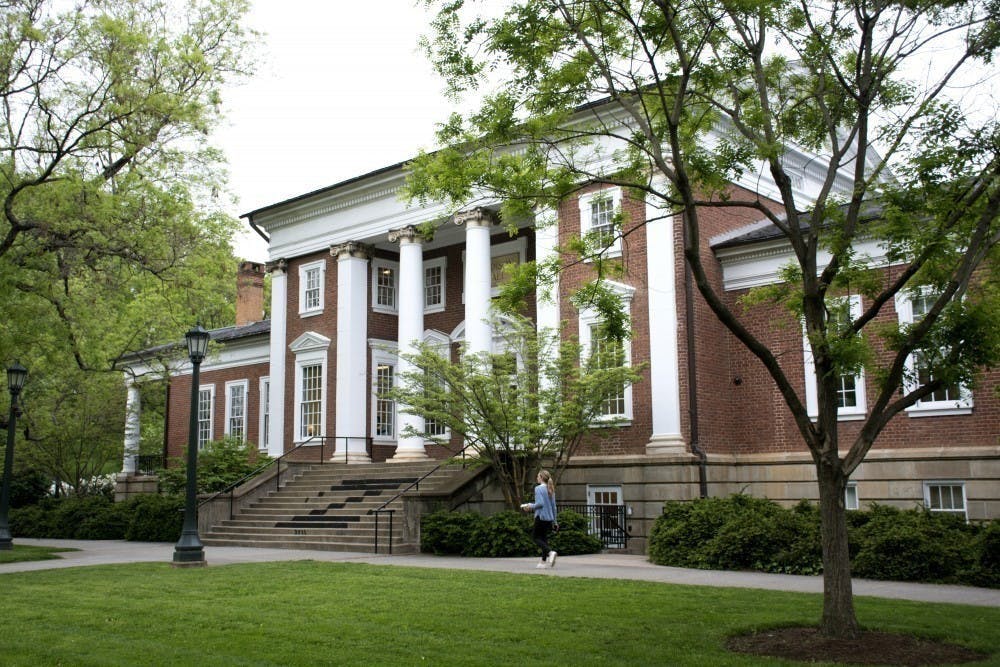Only two days after The Cavalier Daily published that CollegeNet had ranked the University within the bottom 15 percent of American colleges and universities for social mobility, President Jim Ryan unveiled his “Inclusive Excellence” framework as a part of his 2030 plan. IE programs are not unique to the University — they have been integrated into many post-secondary education programs across the country since 2005. Although the program is intended “to facilitate collaboration between the Division for Diversity, Equity and Inclusion and other offices and organizations across the University,” it does not seem to propose any particular means of pursuing this goal or what kinds of diversity will be prioritized.
Noticeably, the IE is a framework — not a distinct plan. Thus, Ryan is proposing no concrete strategy for improving inclusivity here at the University. Instead, the IE is a form of organizational change that will hopefully hold the University accountable in its mission of becoming a more diverse and equitable institution. However, in order for the University to live up to the values outlined in the IE framework, a more substantive plan is needed to make the University more accessible.
IE plans are not a new concept. For example, Virginia Tech has its own inclusive excellence program which works to “foster inclusion and success through inclusive pedagogy, addressing implicit biases and issues of climate in STEM classrooms and creating curricular paths that are flexible and embedded with high impact practices.” Virginia Tech’s program, however, focuses on specific ways to improve inclusivity at their institution. In comparison to Virginia Tech’s initiative, Ryan’s IE framework is quite ambiguous, making it difficult to understand what exactly the University intends to achieve.
While the University has previously tried to make Grounds a more inclusive space, such initiatives have largely been ineffective. For example, Ryan’s tuition promise, unveiled in fall 2018, did not help to sufficiently bring financial aid to more low-income students, but essentially promised what Student Financial Services already grants. At the same time, Ryan has supported proposals that will make the University more difficult for low-income students, such as the recent tuition increase and higher rates for on-Grounds housing. Nevertheless, the University’s endowment recently reached an all-time high of $9.6 billion. The University certainly has the means to bring inclusivity plans into fruition.
It’s no secret that inclusivity is an issue at the University — the social mobility ranking makes that uncomfortably clear. While the social mobility statistic illustrates the difficulty for low-income students to come to the University and succeed, the issue of diversity is far more widespread. From difficulty for LGBTQ individuals to feel comfortable amongst groups on Grounds, to shades of anti-Semitism and an overwhelming number of white students and staff members, particulary from higher-income areas of the Commonwealth, the University is clearly an exclusive community. Without publishing any concrete goals from the IE framework, it is difficult to have faith in the initiative’s worthwhile and needed objectives.
There are real issues of inclusivity at the University that students have worked to make clear to the administration and larger community. If the University wants the IE framework to hold any weight, it must be applied to identifiable initiatives to hire a more diverse faculty, address the corrupt admissions process and rename buildings and memorials that celebrate a racist past. These are just a few of the measures that can help to make tangible differences in the lives of members of the University community.
It’s easy to say that diversity, inclusivity and equity would help make the University a “great and good” place to work and study. What is harder — but more fruitful — is revealing a plan that would actually help achieve that goal.
The Cavalier Daily Editorial Board is composed of the Executive Editor, the Editor-in-Chief, the two Opinion Editors and their Senior Associate. The board can be reached at eb@cavalierdaily.com.







